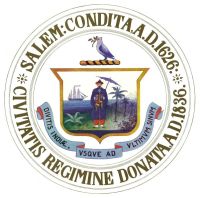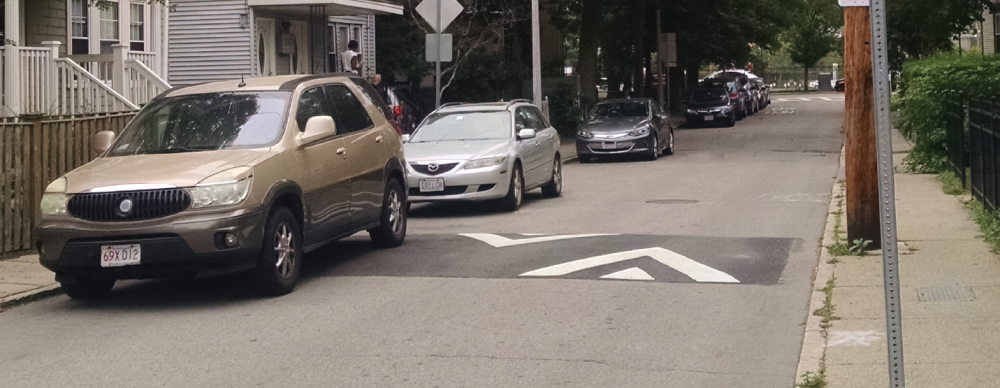City of Salem Neighborhood Traffic Calming Program
City of Salem Neighborhood Traffic Calming Program
4/24/2025 TRANSPORTATION COMMISSION PRESENTATION NOW AVAILABLE
The presentation given at the 4/24/2025 Transportation Commission meeting is now available here. This presentation reviews comments that were received during the comment period as well as upcoming installations for the temporary and permanent traffic calming locations.
NEIGHBORHOOD TRAFFIC CALMING PROGRAM COMMENT PERIOD OPEN UNTIL MARCH 15, 2025
Please share comments on the 2024 neighborhood traffic calming program on the next tab or click here.
To view the 2024 program evaluation presentation given to the Transportation Commission on Feb 12, 2025 click here.
SAFE STREETS FOR ALL SAFETY ACTION PLAN (SS4A SAP)
The SS4A SAP is a City-sponsored initiative to create a community-supported Action Plan for street safety improvements in Salem. This project aims to identify, evaluate, and plan for safety enhancements that will prioritize safety for all transportation users in the City, informed by engagement with communities that experience greater transportation vulnerability. To learn more about this effort, click here to visit the Department of Transportation's webpage or click here to be routed to the project's StoryMap webpage. Both links include a survey, and we encourage all Salem roadway users to respond.
The Neighborhood Traffic Calming Program is an initiative to slow and calm traffic on Salem Streets. Through small-scale, inexpensive projects we can test ideas, collect data, and support permanent changes where successful.
The goals of the program are to:
Eliminate serious traffic injuries and fatalities
Encourage slower speeds
Help people walk and bicycle more comfortably and safely
Create a more livable, walkable, and bikeable City
Build community and connect neighbors
All projects involve a collaborative process with neighborhoood residents, City staff, Transportation Commission, City Councillors as well as the Salem Police and Engineering Departments and the Department of Public Services. The program is intended to complement larger road construction projects throughout the City.
Residents can apply for the traffic calming program here. The submission of an application begins a staff evaluation process for the roadway and does not guarantee that traffic calming measures will be implemented.
The City had developed a prioritization tool to assist with evaluating requests as they are submitted. You can learn more about the prioritization tool here.
Slower vehicle speeds save lives.
1) Gateway treatments include painted curb extensions (known as "daylighting") and street signs at entrances.
2) Speed Humps
- Speed humps are designed for travel speeds of 20 MPH, built 3 inches above the pavement, and are approximately 12-14 feet long. Speed humps are different than speed bumps you find in parking lots, which are taller and are designed for speeds of 5-10 MPH. They typically extend across the width of the travel lane, maintain existing drainage patterns, and are located on residential, low volume streets. Considerations for speed humps include if the street is an emergency response and/or bicycle route. Materials include temporary rubber cushions to constructed asphalt humps.
Example of a temporary speed hump
Example of a permanent speed hump (Source: City of Boston)
3) Speed Cushions
- Speed cushions are similar to speed humps with slots in them. These spaces are designed to be wider than personal vehicles and allow emergency vehicles to travel over them with minimal impacts.
Example of a speed cushion (Source: TrafficLogix)
4) Curb Extensions: Daylighting and Neckdowns
Curb extensions are wider sections of sidewalk at intersections or mid-block locations where there is on-street parking. Curb extensions are used at intersections to provide “daylight” at crosswalks, improving visibility for everyone and narrowing crossing distances. Also called neckdowns, curb extensions used mid-block visually narrow the street, providing additional space for greenery and snow storage. Curb extensions can be built with concrete, flexposts, paint, planters, and more.
5) Chicanes
Chicanes are created by widening sidewalks or by alternating parking from one side of the street to the other. This creates friction and requires people to follow the “S” shape in the road, slowing speeds. Chicanes break up straightaways and often provide an opportunity for landscaping and amenities like bicycle racks, art, community bulletin boards, and more.
6) Neighborhood Traffic Circles
Since launching the program in 2018, the Department of Transportation has received an overwhelming number of requests and have been able to implement traffic calming projects throughout the city. Using our project prioritization tool, we're implementing several pilot and permanent projects each year. In most cases, the traffic calming projects result in reduced travel speeds and perceived improvements in safety from the neighbors who request them. Once measures are implemented, staff collect additional data, receive public feedback, and observe the location to determine how effective the measures are, and if the designs need to modified before going to permanent installation.
Below is a list of installations for the 2024 season:
2024 Pilot Rubber Speed Humps/Cushion Installations
Proctor Street - Mansell Parkway to Highland Avenue
Federal Street - North Street to Boston Street (includes Lynn Street, Beckford Street, Monroe Street, and Flint Street)
- Raymond Road - Loring Avenue to Lafayette Street
- Mall Street - N Washington Square to Bridge Street
2024 Permanent Speed Hump Installations
Chestnut Street - Flint Street to Summer Street
Columbus Avenue - Fort Avenue to Bay View Avenue
Gardner Street - Cabot Street to Lafayette Street* postponed until utility work is complete.
How are the Neighborhood Traffic Calming Program projects initiated?
Projects can be initiated by residents via a program application and the Department of Transportation. In both cases, staff will assess roadways using the Project Prioritization tool and other criteria to determine whether traffic calming elements, if any, are appropriate. This process will also determine when projects may be implemented based on available resources. An application or request to the Department does not guarantee that a street will receive traffic calming.
How will resident parking be impacted by the program?
It is the goal of the Neighborhood Traffic Calming Program to not remove any resident parking.
Why can't I park where the gateway treatments are located?
State Law 700 CMR Section 5.401: Traffic Regulations and Rules for Driving prohibits parking within 20 feet of any intersection. Leaving this space open improves visibility and safety for everyone.
How do you evaluate which streets will receive permanent traffic calming treatments?
We collect speed and volume data before and after projects are installed. Staff also conduct observations, solicit feedback from the community and often post surveys to determine how effective the measures are, and if there are other treatments needed.
In the North Salem neighborhood, speed humps and signs were installed on Buffum, Barr, Barstow, and Dunlap Streets. Dunlap Street high speeds dropped from 65 mph to 48 mph, the average speed dropped from 26 mph to 20 mph, and the percent of vehicles driving over the speed limit dropped from 56% to 11%. Permanent treatments are now complete in the North Salem neighborhood.
What is the difference between a speed bump and a speed hump?
A speed bump is what you often encounter in parking lots and reduce vehicle speeds to less than 10mph. Speed humps are designed to 20mph.
When will my treatments be installed?
Installations typically take place during the spring and summer. Once it is determined that a street should receive traffic calming elements, it can take approximately 1 year for installation to occur due to the need for an engineering approved design and associated public process.
Documents
City of Salem
Christina Hodge
Asst. Transportation Director
Neighborways Design
Jessica Mortell
Sr Placemaker
- Traffic Calming Strategies (Global Designing Cities)




